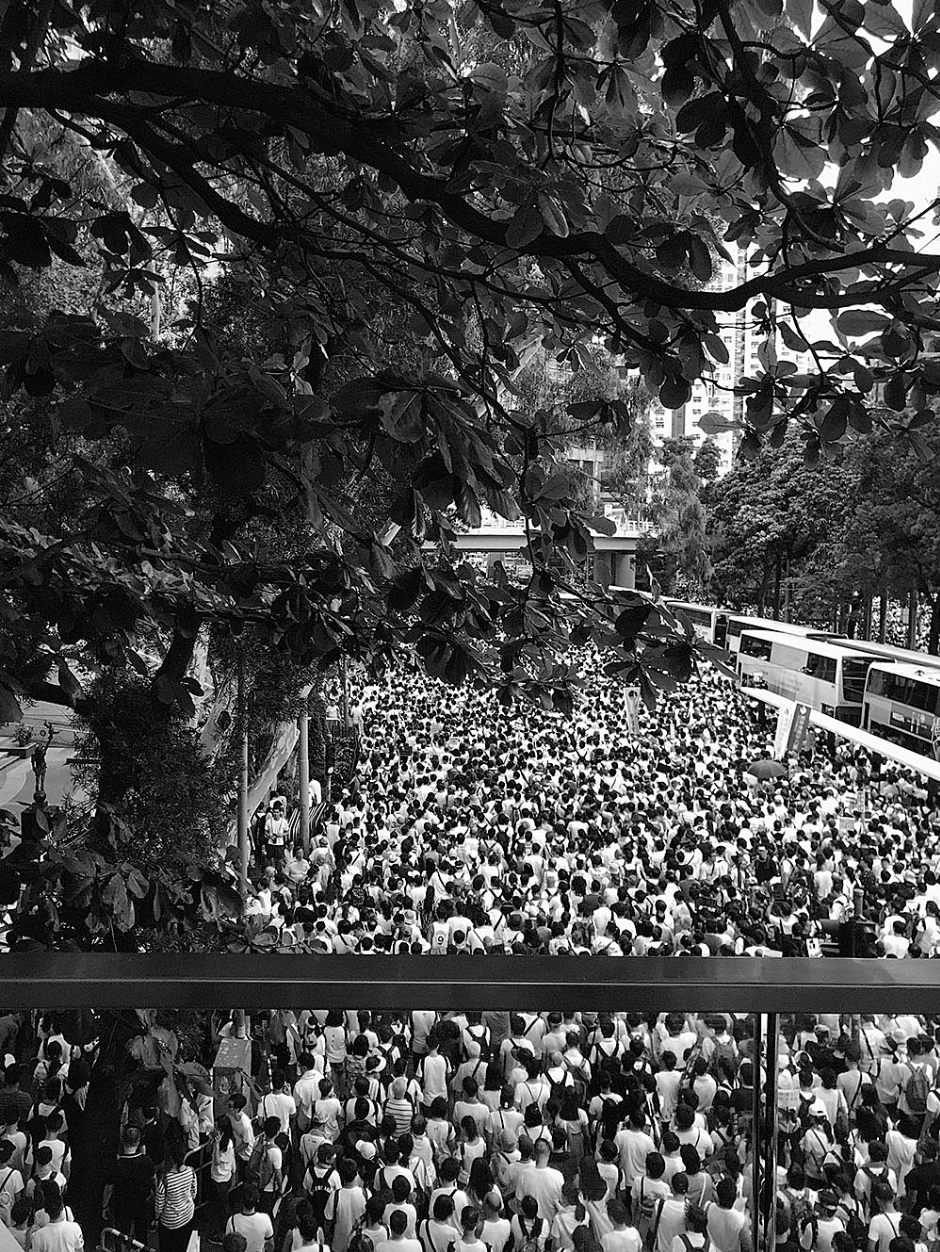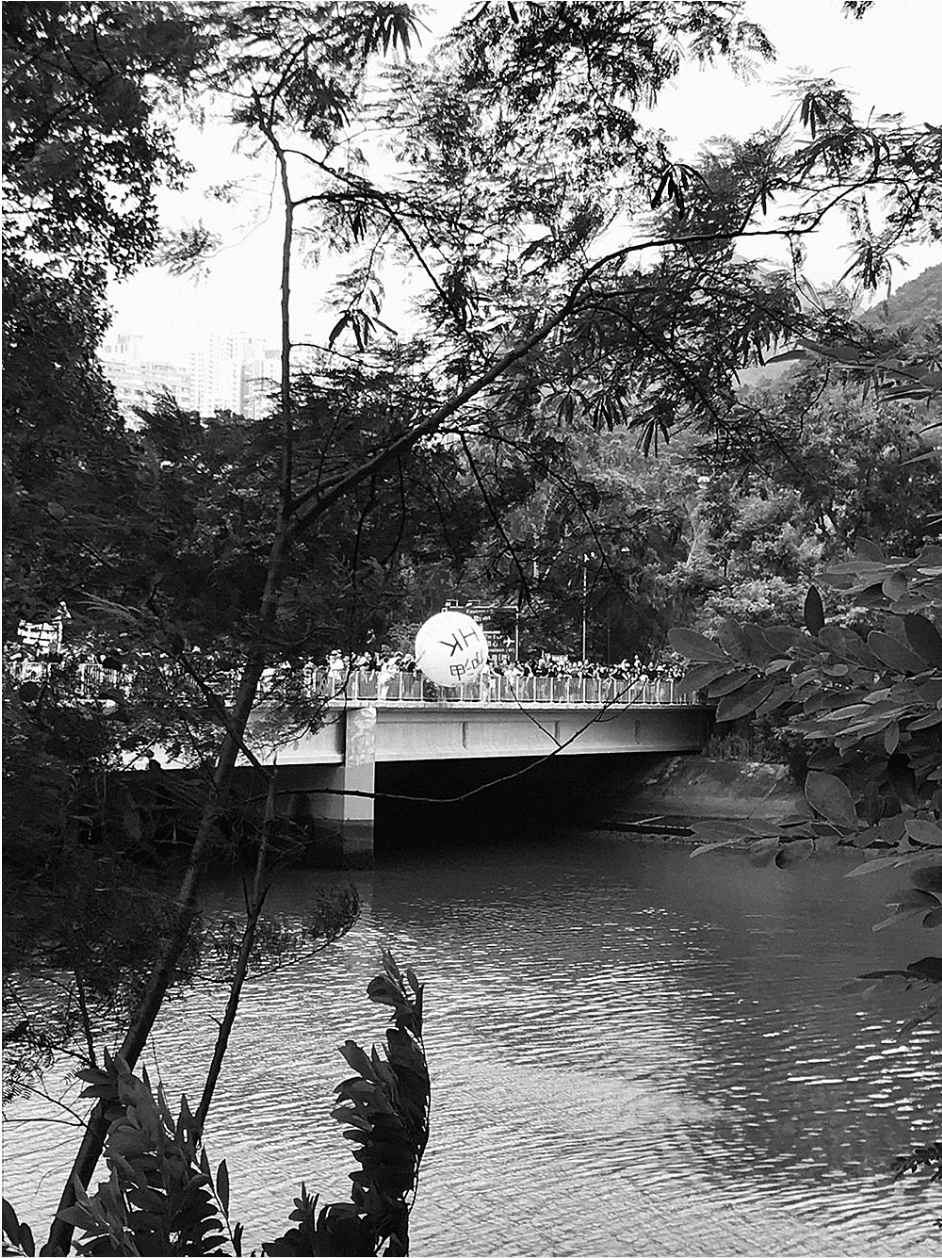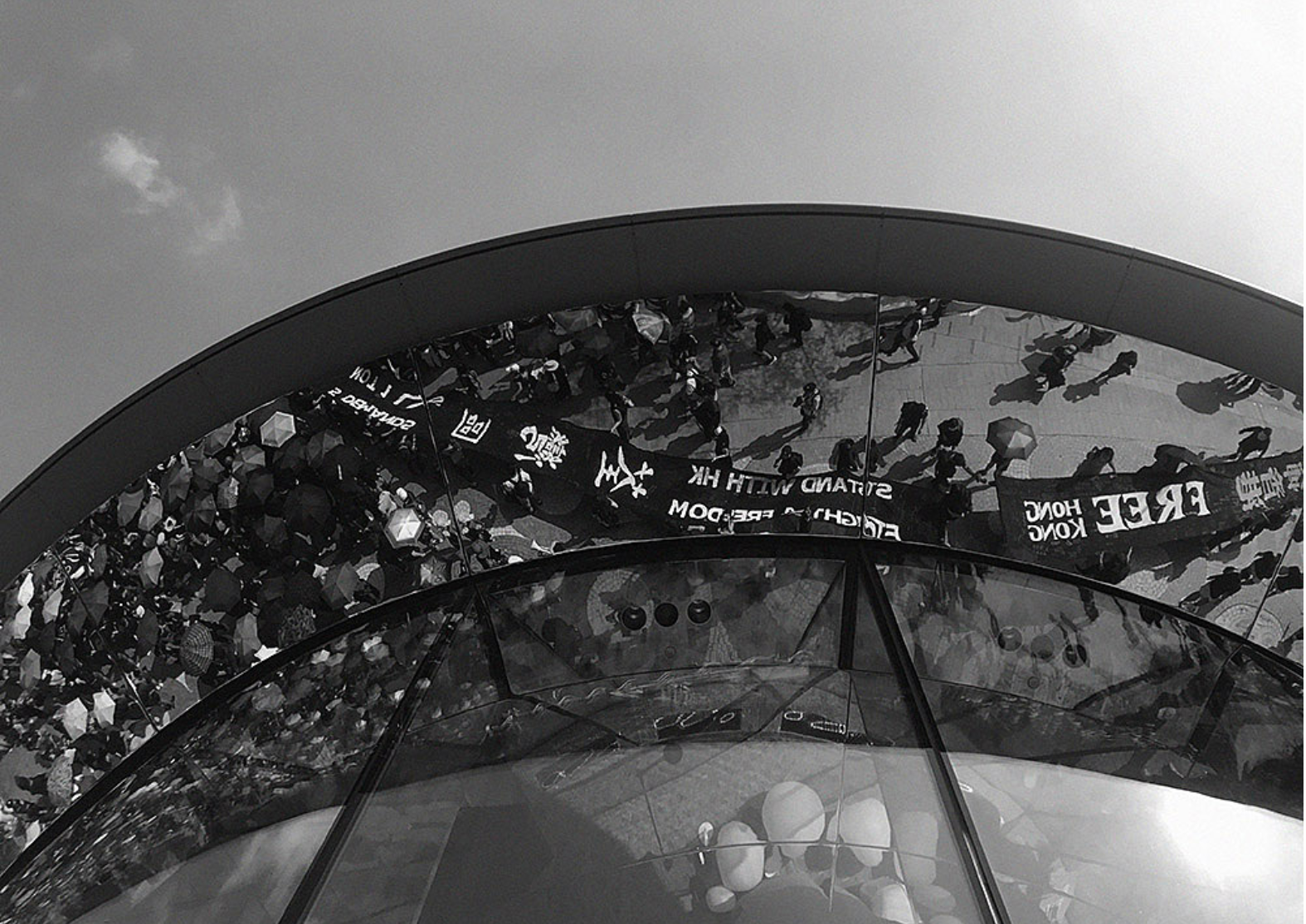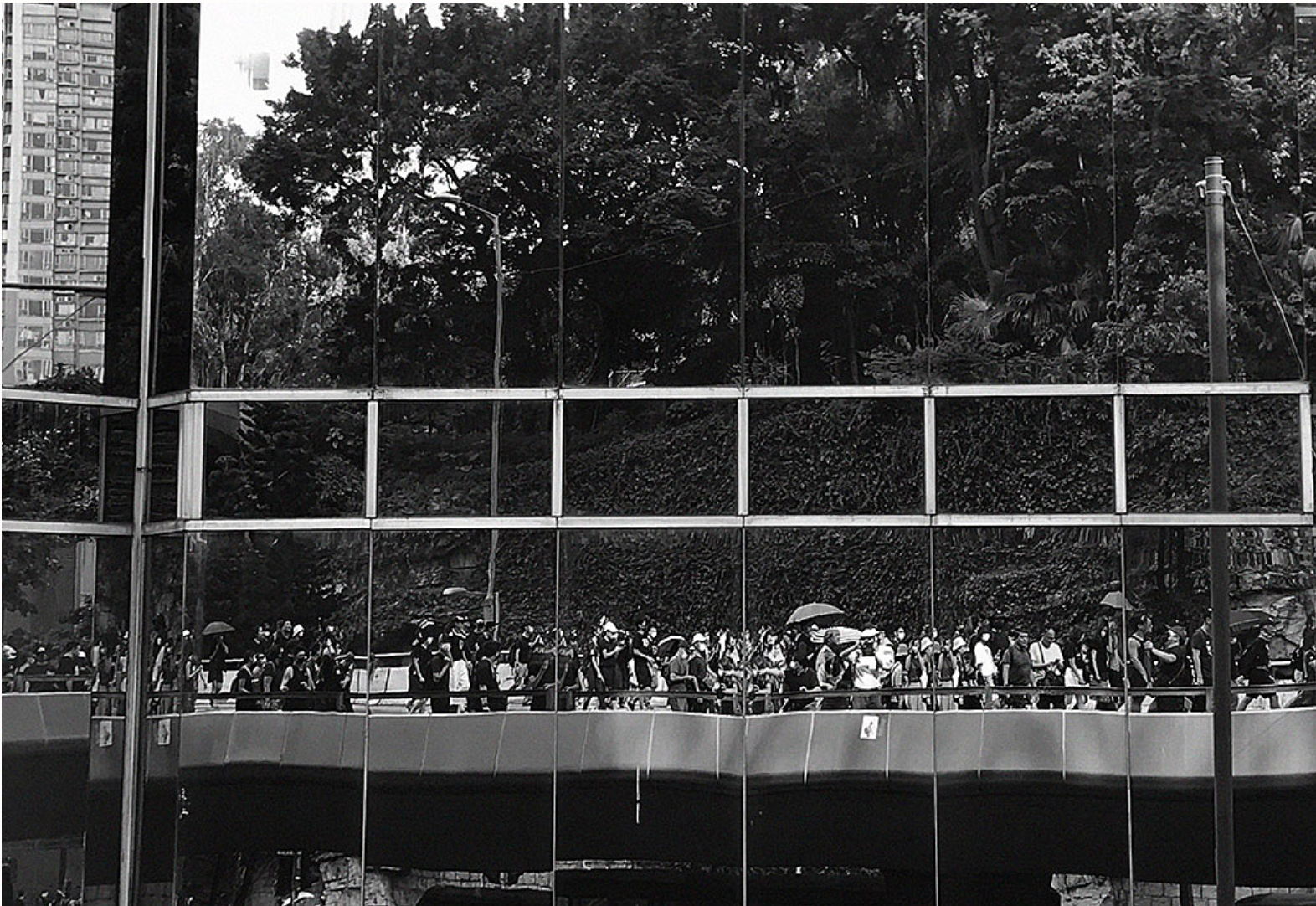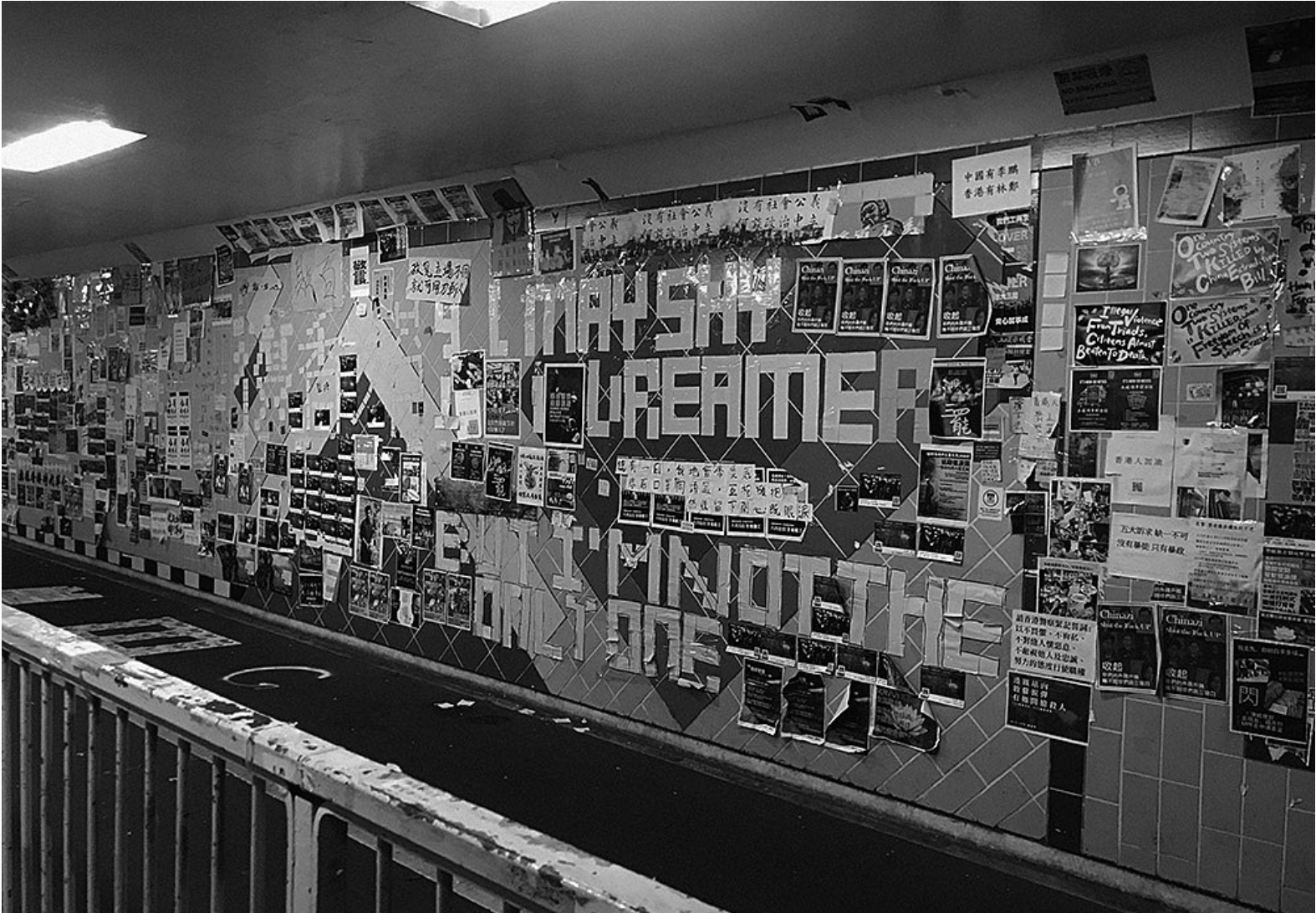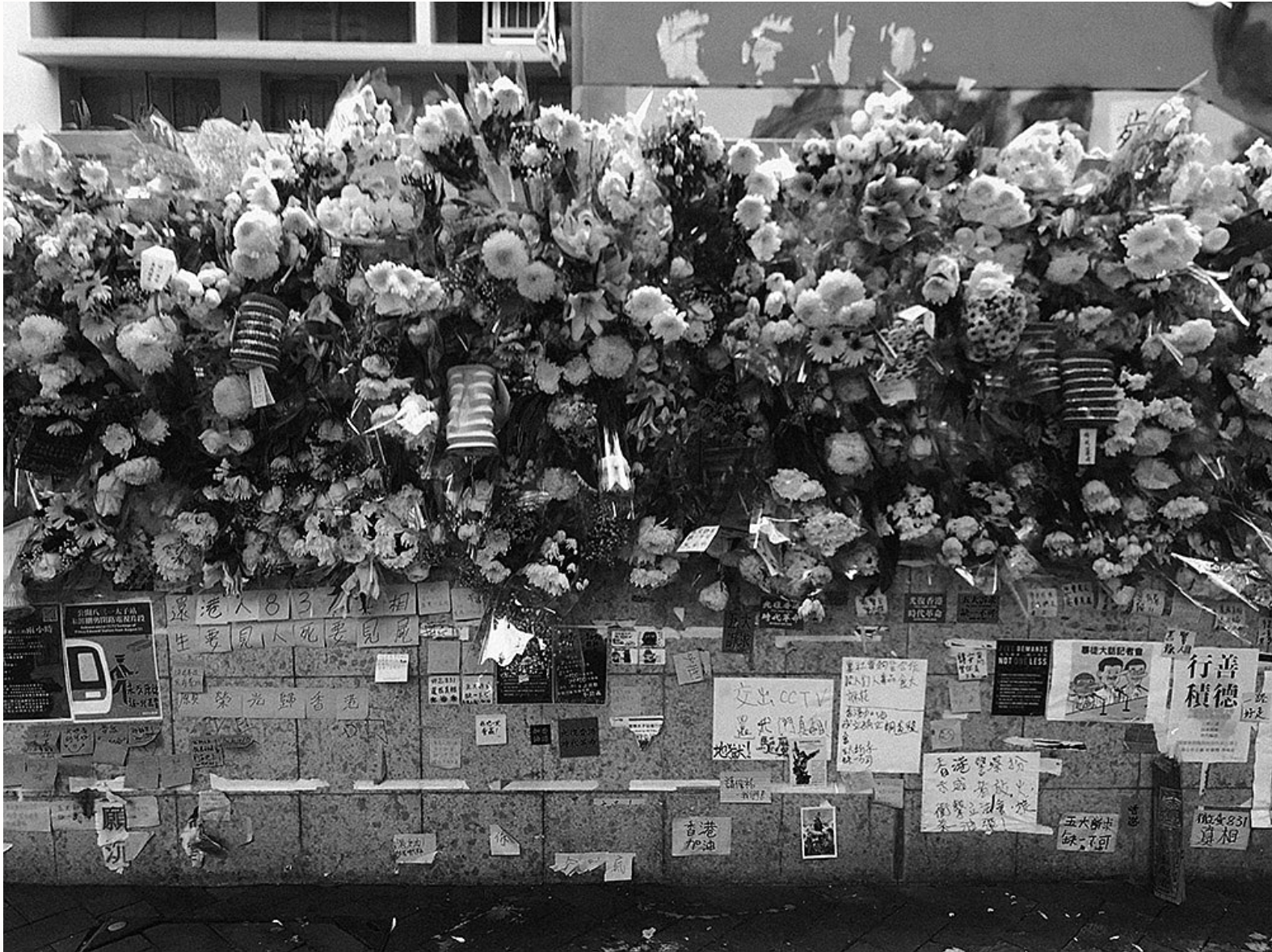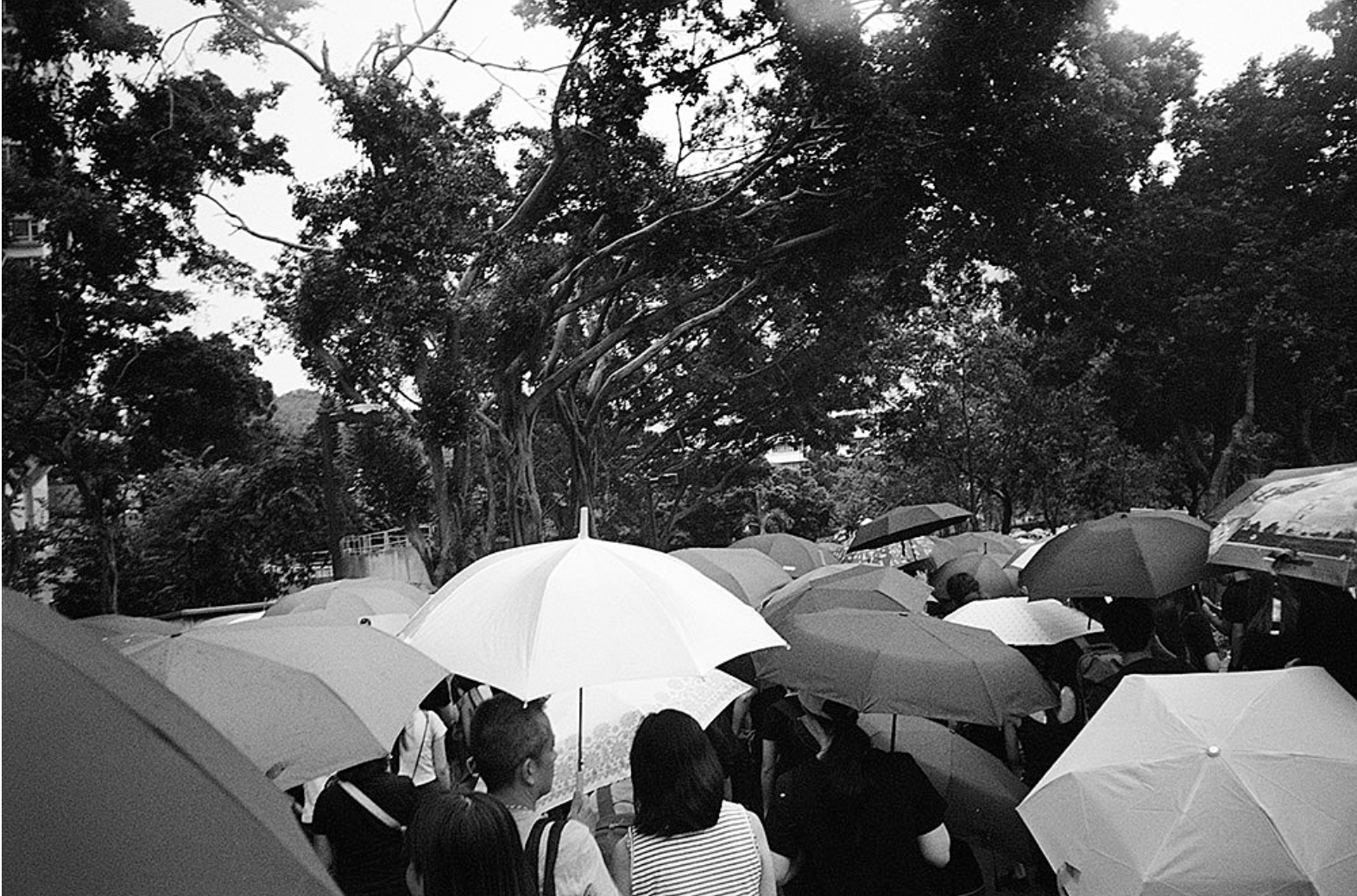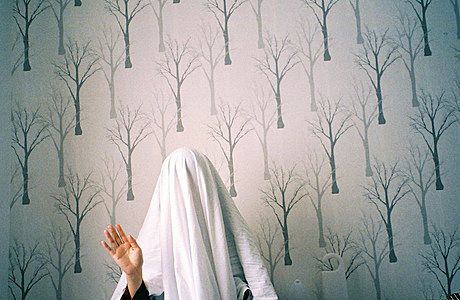Greetings from Hong Kong
After more than 18 weeks amidst pro-democracy protests and police brutality, Sharon Lam writes a message back to Aotearoa.
After more than 18 weeks amidst pro-democracy protests and police brutality, Sharon Lam writes a message back to Aotearoa.
Greetings from Hong Kong. In your last message to me you told me you’d been following the news.
You also asked me “how I felt about everything”. I stared at the blinking ‘|’ in the WhatsApp oval, struggling to reply, because I thought it would be obvious. I am outraged, I am moved, I am annoyed scared hopeful tired can’t sleep. I am feeling a lot; a lot of people here are feeling a lot.
I first felt a lot when I stood in a large, large crowd in Victoria Park back in June. We tried to guess how many of us there were. We stood on our tip-toes and tried to see where the edges of the crowd were, which was impossible. Thousands? Hundreds of thousands? Then someone with a loudspeaker announced that it was true – there were more than a million of us out that day. We cheered. One million people, all standing together on a 33-degree day for the same thing. Have you ever felt that? The heat, the energy, the sweat, of being in a crowd of over a million united people? It’s a lot. You would have felt a lot too. While you’re in the crowd you might forget for a moment what you’re doing there, briefly think you’re waiting for a band to come on. But you’re not, you’re there to oppose an extradition bill and, by extension, to reject a regime that has hundreds of thousands of people detained in camps; that runs on propaganda and censorship; that disappears people, etc. You realise the crowd of one million that you’re standing in is the only crowd of one million in the world actively standing up to this regime. A million people – so big, and so small.
Weekends are full of crowds, of sweating, of chanting, of fear of the police and their triad friends ... Then Monday comes and you’re back on the same subway that was shut the day before.
It’s now October. We have been protesting for 18 weeks. The demands have moved from the bill to larger issues: police brutality, silence from the Hong Kong government, the desire for real elections. Life has taken on a split surrealism. Weekends are full of crowds, of sweating, of chanting, of fear of the police and their triad friends. Going home to see that the protest you just left has escalated and you just missed the tear gas or the storming of the mall by half an hour. Then Monday comes and you’re back on the same subway that was shut the day before, commuting to the office like the weekend’s events exist in a parallel Hong Kong.
I’m by no means a hard-core protestor. I try to go home before it’s dark and take alternate weekends off. I go to the beach with a friend from out of town. I lie in bed and watch TV. I go to the one shop that has slightly cheaper oat milk. On such weekends I feel very guilty, and call myself Nero for watching Rome burn. I stand on the subway with a snorkel sticking out of my tote. I want to show support to those I see in black, or those with backpacks who could be about to change into black. Let them know that I’ll be with them next weekend. I know the way I feel when I am en route in black, and pass people somehow still able to amble around in Sephora. I don’t want people to think I’m like them! Or maybe I am! Maybe they’re just on their weekend off too!
I’m also sending you some images I’ve taken. The news doesn’t care for creativity as it does for things on fire, yet each day brings about a new wave of illustrations across the internet and on Lennon Walls in every neighbourhood – walls covered with post-it notes, posters and stickers, providing information and satire, messages of dreams and desperation. Their importance isn’t lost amongst audible forms of protest. They’re repeatedly pulled down and repeatedly put back up. People have been attacked at these walls, including a 26-year-old woman in Tseung Kwan O. A stranger asked her what she thought about it, and then he brought out his kitchen knife. She is, thankfully, stable now. Did you know that I am also a 26-year-old woman in Tseung Kwan O? Last time I cycled through the tunnel, an aunty casually said, “Wa! Isn’t this the place they chopped her up?!”
*
This extended letter is extended for a reason; that reason being that each time I am about to move this message from draft to outbox, something else happens.
In brief, these are the something-elses that have happened:
1. The police have lost it!!
You told me you watched the video too, so I won’t go on too much, but, yes, the police stormed into a subway station, got onto a stationary train and started beating passengers up. No time to check who anyone was, or if they had even been protesting. The video has blood, crying, screaming. Did you notice how quickly the police ran to attack, and then how quickly they ran away? There are more videos from the same station that night. In some, they back off when they notice someone is filming. In another you see how police closed off all the exits and refused entry to medics, even as the medics pleaded to go inside to help those bleeding on the floor. Police brutality reached a new peak that night, a peak that’s fast becoming a normalised plateau. Each day brings new videos. Police kneeling on people’s necks, jeering at passers-by in jandals, macing local democratic politicians in the face mid-conversation, shooting a 15-year-old boy with a live round.
2. Subway bad
The station that the police stormed in that now-infamous video is called Prince Edward. It’s the stop I use every day for work. That escalator you see civilians crouching on in fear is the exact same escalator I run up each morning because I’m late! It’s like a horrible version of a movie being filmed at a café you recognise. Prince Edward was closed for 24 hours after the attacks, presumably to clean up the mess, hide evidence, whatever.
I had never thought of how terrifying it is for public transport agency to be complicit with the bad guy.
The subway company – the MTR – still hasn’t released the CCTV footage of what went on in the station after the police closed it. Now it’s general knowledge that the MTR is complicit with the police, and with the government, who is the MTR’s majority stakeholder. Some are calling subway stops ‘satellite police stations’, since they sometimes transport police privately, and police in full riot gear are allowed to patrol and search people in stations. I do not recommend making eye contact.
It’s also common for the MTR to shut off the stations near where protests are planned, even if that protest is somewhere remote like the airport, which is on a whole other island. I had never thought of how terrifying it is for public transport agency to be complicit with the bad guy. People unable to get home, trapped in unmoving vehicles or on a stretch of road, the police on their way with truncheons, looking for young heads.
As people remain heavily dependent on the MTR to get around, the MTR’s complicity can also enact a de facto curfew. After a full-day shutdown in early October, it’s been shutting at 10pm, 9pm, 8pm. They say it’s to “fix the vandalism”, which can also be seen as an attempt to sow public discontent towards protestors. To reinforce this image, the MTR has hired new employees to stand around in hi-vis to ‘help’ commuters in the apparently unrecognisable landscape, which is really just the same station dressed up with random tape and tarp. At first, with long queues of commuters tutting and sighing at a single working turnstile, it seemed to be effective. Then people realised that many of these ‘broken’ machines were still working. Ignoring half-hearted instructions by the hi-vis staff, the lines disappeared, and now it all looks just a bit silly.
3. Bandaid on a dumpster fire
On the 4th of September, Carrie Lam (the Chief Executive, appointed outside of Hong Kong, not voted for, hugely unpopular) announced the official withdrawal of the extradition bill, following three months of consistent protesting. Memes popped up instantly: a hose dribbling water at a fire ten metres away, someone trying to mop waves at the beach, a lot of Thanos stuff that I don’t quite get because I didn’t watch the movie. Too_Little_Too_Late_JoJo.mp3. By the time of the announcement, eight lives had been confirmed lost, four eyes had been blinded, more than a thousand people had been arrested during three months of state violence, and four demands remained unanswered:
- An independent inquiry into police brutality and misconduct
- Amnesty for arrested protestors
- Retraction of the definition of the protest on 12 July as a “riot”
- Real universal suffrage
While Hong Kong is literally and metaphorically on fire, one street over, people are still clubbing, yachting, and going to Disneyland.
4. People still clubbing tho
On one end of the spectrum are protestors who put their lives at risk and continue to speak up even after the worst happens. Who shake, as the first person to publicly and non-anonymously come forward as a victim of sexual assault at a police detention centre. Who are followed and attacked with knives and baseball bats for organising the million-people protests, continue to organise protests, then are attacked again, this time with hammers.
On the other end are those who can only comprehend the protests as hindrances to their routines of convenience. The full-time Neros. If there’s traffic and the MTR is shut, what’s the best way to get to the junk boat party? Which Ikea branch won’t have crowds of protestors nearby? What to order on Deliveroo instead of going out?
While Hong Kong is literally and metaphorically on fire, one street over, people are still clubbing, yachting, and going to Disneyland. It’s a great time to go, I’ve been told: no lines.
*
So how does one win against a party that has money in every curved facet of the Earth? ... Well, not every action is taken because of a promised result.
I have no idea how all of this will end. When the UK ‘gave’ Hong Kong back in 1997 the agreement was that Hong Kong would enjoy a “high degree of autonomy”, amongst other things, until 2047. Except that Hong Kong has never had genuine elections, and what autonomy we do have has been increasingly eroded. The abduction of booksellers, the imprisonment of activists, the unwarranted banning of democratic politicians in an already rigged legislative system, big-buck campaigns to market Hong Kong as part of the “Greater Bay Area” – all factors leading up to 2014’s Umbrella Movement, Hong Kong’s own yellow-umbrella-toting Occupy movement, which international media found cute because kids were doing their homework and asking for human rights at the same time.
An enduring image of the final days of the Umbrella Movement was a large banner hung dramatically from a footbridge, which said, “We’ll be back”. From what I’ve heard and read, the mood in those final days was general despondency. But now we are back. The mood remains determined, albeit tired.
So how does one win against a party that has money in every curved facet of the Earth? How is a party petty enough to ban basketball coverage over a Tweet supporting Hong Kong going to allow universal suffrage in Hong Kong? Well, not every action is taken because of a promised result. There are those that are taken because it’s inherently the right thing to do. Not littering, even though the Amazon is burning. Brushing your teeth, even though you could get hit by a car tomorrow. Protesting for Hong Kong, even though you’re wearing a discounted hardhat from a hardware shop and the other side controls a 15-trillion-dollar economy.
*
During the last elections in Aotearoa, I was an electoral officer, a job you may remember me raving on about because I love sticking stickers on forms, ruling stuff out with a ruler. Give me a pile of envelopes to fill and seal, and I’m beside myself. How different that time feels to now. Instead of smiling orange blob-people declaring “I’ve voted!” the stickers declare revolution. And how wild it is that this ‘revolution’ being sought in Hong Kong is simply the right to do what everyone – from spotty 18 year olds to spotty geriatric year olds – does in primary-school assembly halls across Aotearoa every four years.
I mention working at the elections because of two voters that I had forgotten about until now. On Election Day itself there was a young couple, the only voters who spoke to me in Cantonese, who seemed to be in a hurry and wanted to know just one thing before they voted. What they asked me was who the current prime minister was – they’d just vote for them. I was glad to have the electoral officer code to fall back on. I told them I couldn’t tell them that, or anything else that could affect their vote.
I don’t know if they were actually from Hong Kong, but as our summer of discontent ages into autumn, I wonder if that couple has heard about the protests, how they feel about them, and whether it has motivated them to find out who the prime minister of New Zealand is now.
So, to answer your question, that’s a bit of how I’m feeling about everything. Wish you were here.
All photos by Sharon Lam.

